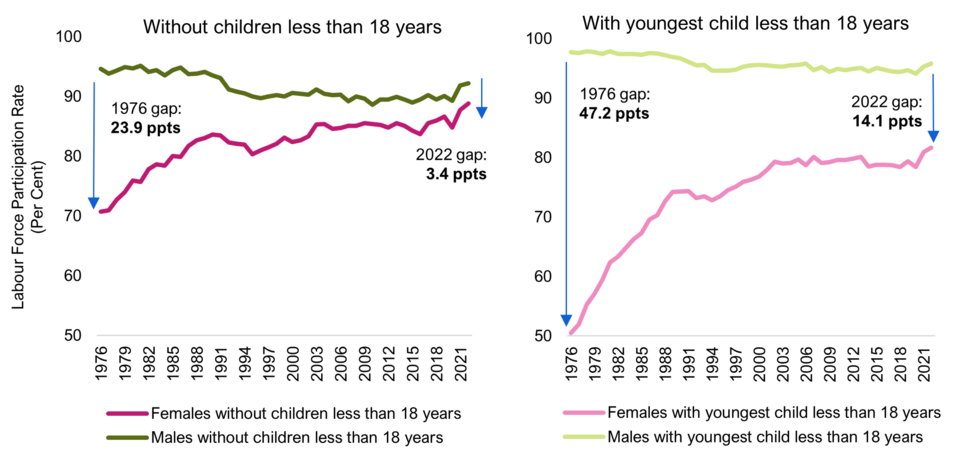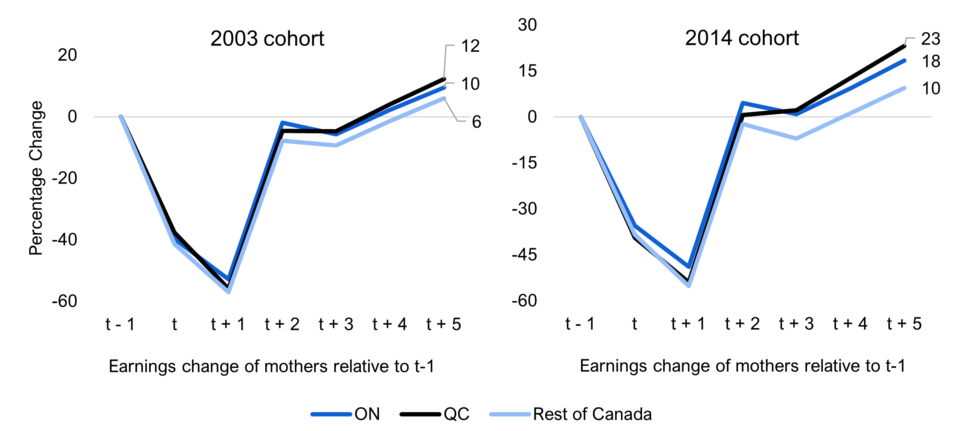EDITOR’S NOTE: This article originally appeared on The Trillium, a new Village Media website devoted exclusively to covering provincial politics at Queen’s Park.
The new $10-a-day child-care program has the potential to boost the participation of Ontario women in the labour market, according to a new report, but mothers are still paying a significant earnings penalty that cheaper child-care fees aren't expected to solve.
The Financial Accountability Office (FAO) analyzed economic trends for women and the potential impact of the federal-provincial child-care deal in Ontario. It's the first report from the office since the departure of Peter Weltman, whose appointment was not renewed by the legislature.
"What we found was women have made significant progress regarding labour market participation and wages, but still face challenges, particularly around the motherhood penalty," said acting financial accountability officer Jeffery Novak, at a press conference Tuesday.
The FAO found that the gap in overall labour market participation between men and women has narrowed since the 1970s but remains for mothers. If the $10-a-day child-care program is implemented as planned it could tighten the gap further, adding roughly 50,000 to nearly 100,000 more women to Ontario's labour force over the next four years.
However, the FAO noted key "challenges" to the program that could prevent that: "inadequate funding, a lack of child care spaces, a shortage of qualified early childhood educators and any future changes to parental leave benefits."

Education Minister Stephen Lecce said the province's agreement with the federal government acknowledges that federal funding for the child-care program won't meet the expected demand for spaces and includes a commitment to conduct an audit to see how much additional funding and spaces will be needed to meet the demand, with Ontario hoping that will convince the federal government to pay more.
"We'll continue to work collaboratively with the federal government to make the case for more investment so that we can meet the needs of more moms and dads in Ontario, and frankly, get more women working in the economy," Lecce said.
While increased labour force participation from subsidized child care could be beneficial for the women who join the workforce and for the country's macroeconomic health, it doesn't carry the same benefits for individual mothers' earnings, the FAO found.
By comparing outcomes in Ontario and Quebec after that province introduced a similar child-care plan in 1997, the FAO found that while subsidized child-care significantly boosted women's participation in the labour force, it "only modestly improved mothers' earnings."
"Mothers in both provinces faced motherhood penalties for two years before returning to pre-childbirth earnings. However, five years after childbirth Quebec mothers earned 23 per cent more than they did pre-childbirth, larger than the 18 per cent increase for Ontario mothers," the FAO found.
The FAO also noted that women have been giving birth later, and older mothers tend to experience less earning loss than younger mothers.

The FAO looked at Ontario's gender wage ratio, which measures how much women earn per hour relative to men, finding it's been stuck at around $0.87 for the past decade, and it persists across all age groups and occupations.
It found about two cents is attributable to the occupations women work in, while the other 11 cents is due to wage inequality within occupations, which "could be due to gender-based wage discrimination, or women’s selection of less demanding or more flexible work to accommodate family or caregiving responsibilities, among other factors."
